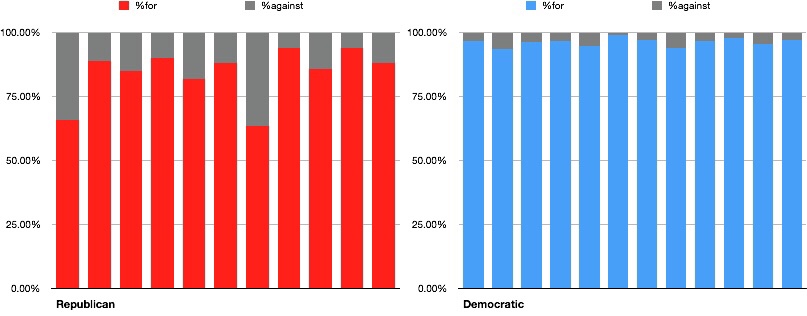The best way to teach a growth mindset is to practice it. Demonstrate that you accept challenges and work to grow.
-

Training Day: 26 May 2018
Fundamentals of Beach Volleyball
Done in cooperation with Sideout Volleybar.
-
“Was that going out?”
I hear a number of common phrases during volleyball play which I discourage athletes from using. This is why.
“Was that going out?”
This phrase is most commonly uttered right after a player contacts a ball during defense and shanks it out of team control. It’s a peculiar question to ask of a team mate, because the outcome is already done. One cannot rewind to that specific situation again. What it does represent is a deflection of perceived responsibility. If the ball was indeed perceived to be going out, then I’ve seen the shanker blame her teammate for not warning her sooner. If it wasn’t, then the shanker was making a good effort play to just touch the ball. Using the phrase is a means of externalizing the issue instead of actively learning from it.
The key here is developing good judgement to decide to play the ball so that it is in system, regardless of whether it was going out or not. It works best when the digger chooses to embrace the responsibility of taking the ball, confident in the team’s ability to convert the play, or accepting the heat for gambling the outcome of the rally for a potential quick point. Either way, the lesson is to accept and learn, rather than deflect and deny.
-

The Math and Consequences of Rally Point Scoring
The adoption of rally point scoring fundamentally changed the strategy in beach volleyball. The original mintonette borrowed scoring from baseball with nine innings — but few people even remember that. Some, though, can probably remember the sideout scoring system, where a team must have served the ball to earn a point. Rallies won by the receiving team didn’t change the score – resulting in unpredictably long games. In the two man version of beach volleyball, the game evolved into a marathon, where grinding down your opponents by sheer endurance is a viable strategy.
The modern rally point scoring system awards a point for the team winning the rally, regardless of who serves the ball. This small change ensures that with each rally the game proceeds towards the end point, which results in a more stable prediction of match durations. But what has remained unchanged is the need to earn the two point advantage to end the set at 21.
The team receiving the serve usually has the first chance to attack and terminate the rally, earning the first point (“siding out”). Players settle into practicing this scenario often: it’s fairly easy to reproduce in isolation, can be made predictable, and for the attacking player, a feeling of strength crushing the ball against an imagined defenseless opponent. The components can be simplified into modular training parts: passing the ball to a set location on the court, setting with recognizable biomechanics, and attention paid to the velocity of the attack. But assuming that a team is proficient at siding out, the next point, they would have gained the responsibility of serving the ball – and handed the advantage of first attack to the other team.
The equalizing nature of this rule means that the way to win is to earn your points without needing that service receive advantage at least twice. Not counting unforced errors, the three primary ways to earning the point advantage are:
- A service ace
-
A stuff block (and its variants)
-
A defensive conversion
Of these three, the last is most common, and requires effective transition setting and smarter attacking. In general, practice should be weighted to focus on these play scenarios, but these are greater challenges for both coach and athlete. These do not easily break down into reproducible modules, nor does effectiveness arise exclusively from homogenous biomechanics. But learning to adapt to more chaotic conditions makes for a more effective team.
-

FIVB Doha 2018
The news about the FIVB Katara Beach cup in Doha that has people agog is that Jake Gibb and Taylor Crabb managed to defeat Phil Dalhausser and Nick Lucena in the second round match of Pool A – which earned them a first round bye in the elimination bracket, but doesn’t really eliminate Phil and Nick. In other notable developments, this is the first appearance of the new team of Adrian Carambula and Gabriele Pasquale playing for Italy, although they didn’t make it out of the qualifier. Other interesting participants in the qualifier are Indonesia and Scotland. American teams in general did well, all of them except for Phil and Nick earning first round byes — yet only Phil and Nick survive to make it to the semi finals.
-
The Texas Primary Elections: by the numbers
It’s the day after the Texas Primary Elections, which serves to narrow the field for the two major American political parties heading into the midterm elections in the fall. Here in Houston, which sits in Harris County, the results are posted online for the Republican Primaries and the Democratic Primaries as PDF files. A peculiar anomaly in the posting of the election results is how the totals are reported. At the top of each report is:
Republican: District Voters: 155,798 of 2,249,591 = 6.93%
Democratic: Number of District Voters: 167,396 of 2,249,591 = 3.72%
The total number of registered voters match up between the two reports, but while the Democratic numbers are slightly higher than the Republican numbers, the reported percentage is nearly half. Puzzling.
Most of the news have focused on the individual candidates vying for public office, but the party ballots also included a number of Propositions – statements which appear to reflect the party’s overall priorities and stances on certain issues. The primary election could also serve as a type of referendum on how party affiliated voters feel about them. The wording is distinctly different between the two parties. At least the Democratic Party used short subheadings to summarize each proposition. Voters in the Republican primary are more divided in the Propositions presented, with the topics involving abortion and replacing property taxes with consumption taxes both receiving over 30% against. Given that the wording is designed to appeal to tribal identity, this is pretty significant. There’s a glimmer of hope that even voters don’t want the abortion or “bathroom bill” to remain central to the Republican identity. Meanwhile, the loftier “Rights” wording of the Democrats seem to resonate fairly well with the electorate.

Republican Propositions
Proposition Description For Against Total %for %against 1 Replace property tax with consumption tax 92,468 48,498 140,966 65.60% 34.40% 2 No governmental entity should ever construct or fund construction of toll roads without voter approval. 130,409 16,904 147,313 88.53% 11.47% 3 Republicans in the Texas House should select their Speaker nominee by secret ballot in a binding caucus without Democrat influence. 123,396 21,872 145,268 84.94% 15.06% 4 Texas should require employers to screen new hires through the free E-Verify system to protect jobs for legal workers. 132,206 14,896 147,102 89.87% 10.13% 5 Texas families should be empowered to choose from public, private, charter, or homeschool options for their children’s education, using tax credits or exemptions without government constraints or intrusion. 120,457 27,276 147,733 81.54% 18.46% 6 Texas should protect the privacy and safety of women and children in spaces such as bathrooms, locker rooms, and showers in all Texas schools and government buildings. 130,355 18,026 148,381 87.85% 12.15% 7 I believe abortion should be abolished in Texas. 91,786 53,209 144,995 63.30% 36.70% 8 Vote fraud should be a felony in Texas to help ensure fair elections. 139,556 9,248 148,804 93.79% 6.21% 9 Texas demands that Congress completely repeal Obamacare. 125,942 21,490 147,432 85.42% 14.58% 10 To slow the growth of property taxes, yearly revenue increases should be capped at 4%, with increases in excess of 4% requiring voter approval. 137,348 9,355 146,703 93.62% 6.38% 11 Tax dollars should not be used to fund the building of stadiums for professional or semi-professional sports teams. 129,860 18,179 148,039 87.72% 12.28% Democratic Propositions
Proposition Description For Against Total %for %against 1 Right to a 21st Century Public Education 153,406 5,586 158,992 96.49% 3.51% 2 Student loan debt relief 147,747 10,830 158,577 93.17% 6.83% 3 Right to universal healthcare 153,461 6,138 159,599 96.15% 3.85% 4 Right to economic security 152,653 5,682 158,335 96.41% 3.59% 5 National jobs program 147,703 8,719 156,422 94.43% 5.57% 6 Right to Clean Air, Safe Water, and a Healthy Environment 157,466 1,821 159,287 98.86% 1.14% 7 Right to dignity and respect (antidiscrimination) 153,465 5,179 158,644 96.74% 3.26% 8 Right to housing 147,590 9,614 157,204 93.88% 6.12% 9 Right to vote 152,838 5,884 158,722 96.29% 3.71% 10 Right to a fair criminal justice system 154,559 3,864 158,423 97.56% 2.44% 11 Immigrant rights 151,231 7,310 158,541 95.39% 4.61% 12 Right to Fair Taxation 153,060 4,753 157,813 96.99% 3.01% -

Observations on Primary Elections
Today was one of the election days in Texas. As a primer for the reader who is unfamiliar with the political set up in America, the scene is dominated by two main political parties: the Republican and the Democratic parties. And before the main elections, each party holds primary elections to install the main candidate that they are putting into the main election for each office. Although the field may have, for example, 14 potential candidates vying for the District 2 Congressional seat (9 for the Republicans, and 5 from the Democrats), by the end of the primary elections, there will be two candidates. This type of hypersimplification extends to much of American politics, even when describing issues that aren’t candidates running for office, such as resolutions or statements of principle.
Any one voter is allowed to vote in only one of the primary races, but this only serves to narrow the field within that party. The vote to win the actual office doesn’t happen until November, and is completely separate from the primary voting. I have a friend who votes in the primary in the party he will ultimately not be supporting – and this makes sense. If one is aligned ultimately with the values of a particular party, choosing to influence the composition of the opposing party means a long term engineering of overall political values towards the compromised middle, regardless of party name.

But the system is rigged early on to foster tribalist mindsets. Instead of separating party values as an issue to be discussed, voters are asked to identify themselves as Republicans or Democrats first. This subtle language establishes tribes right away, setting up the “us vs them” attitude long before any other issues are described, and thus maintains partisanship first. This nudge is how people can be led to voting against their own best interests, as fear of tribal rejection often overrides even statements of fact. David McRaney did a particularly good podcast episode on Tribal Psychology that is worth checking out. Learning to recognize the signs of tribal separation is an important skill – humans evolved to rapidly segregate into tribes, and this urge colors almost all aspects of judgement.
-

How extinction shaped the Australian outback
When extinction is spoken about, it’s almost exclusively in terms of land based vertebrates, usually mammals, which form a tiny portion of the biodiversity of the planet. And even that attention is heavily skewed towards “charismatic megafauna” – animals that are cute and big enough to be visible. But it’s the extinction of the small and spineless that can shape how the world works. The very oxygen rich atmosphere of the planet is possible in part due to the extinction of anaerobic microbes, and how the extinction of oysters in the Hudson River changed the lives of New Yorkers.
-

Bring a coffee mug with you

Bring this with you for brunch. Or anytime you are in company that tends to start eating before you’ve had a chance to update Instagram. Order the mug.

